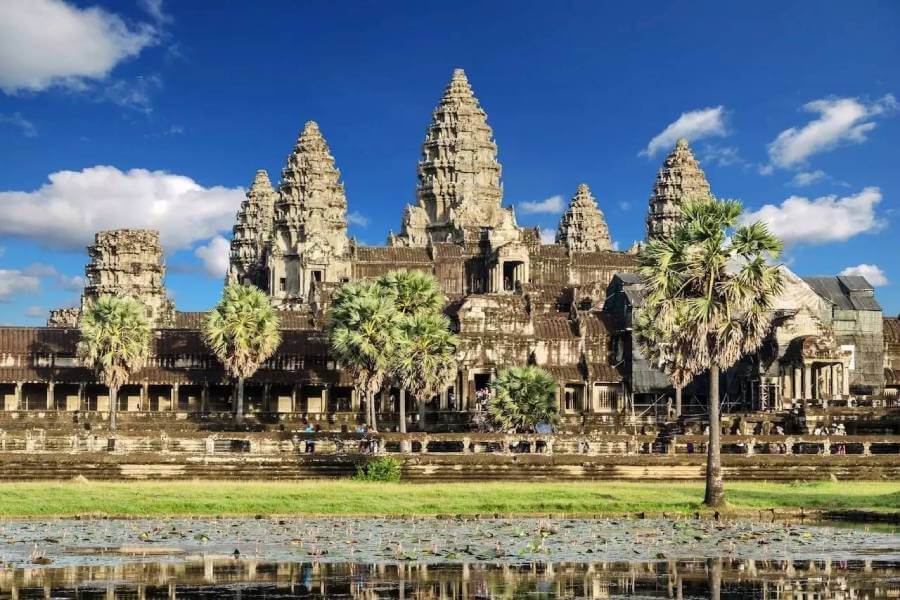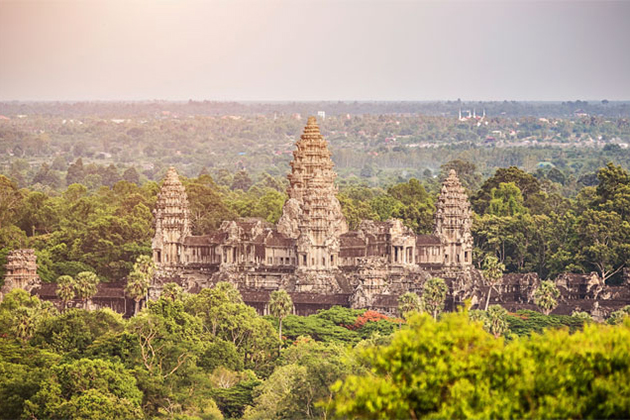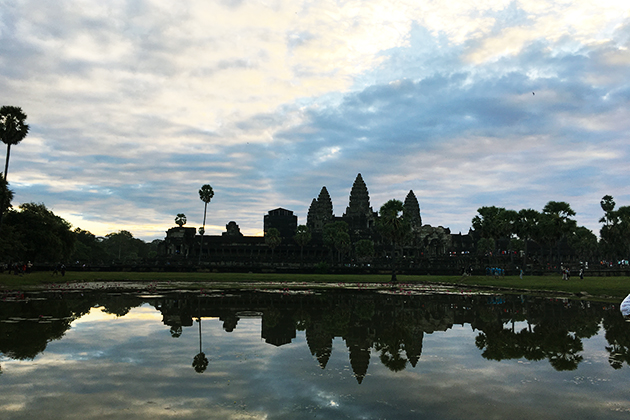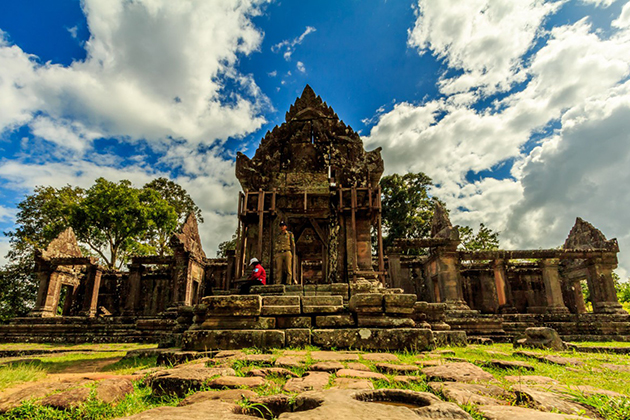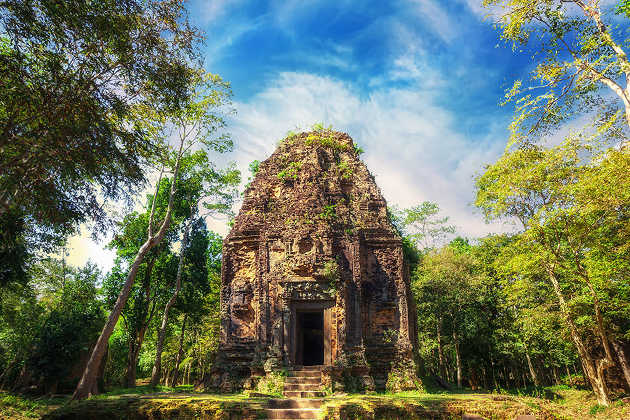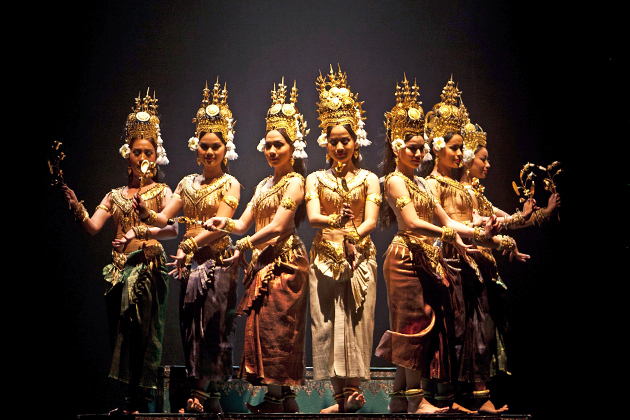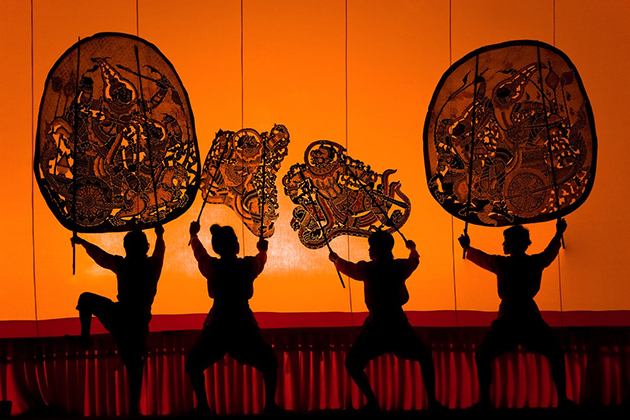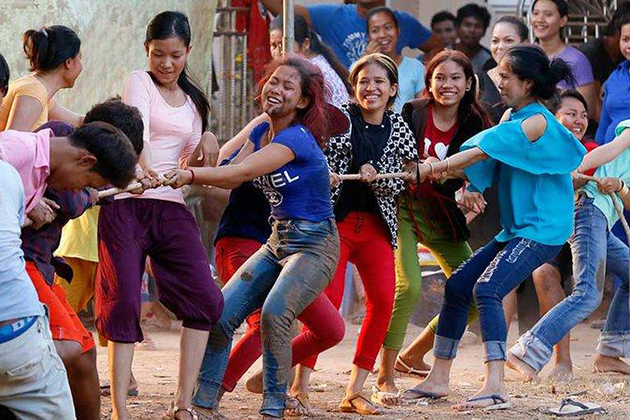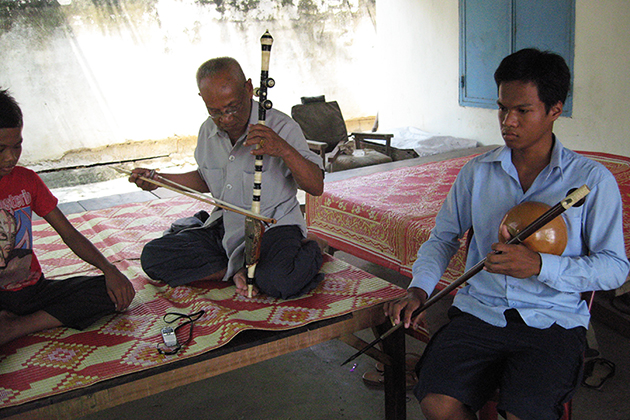Cambodia is a beautiful land of the Khmer empire in the past. The ancient temples of Angkor Wat, Angkor Thom, Preah Vihear Temple and the fall of the Khmer empire are always marked by majesty, grandeur, and central place in the wonders of the world. Today, the unique architecture of the Khmer Empire is honored by UNESCO as the material and intangible cultural heritage of humanity and is the attraction of tourists around the world. Take a trip to Cambodia, and we will head you off to the UNESCO World Heritage Sites in this Kingdom
Contents [hide]
- 1 Tangible Cambodian UNESCO World Heritage Sites
- 2 Intangible Cambodian UNESCO World Heritage
- 2.1 Royal Ballet – World Intangible Cultural Heritage Recognized in 2008
- 2.2 Sbek Thom, Khmer shadow theatre - World Intangible Cultural Heritage Recognized in 2008
- 2.3 Tugging Rituals and Games - World Intangible Cultural Heritage Recognized in 2015
- 2.4 Chapei Dang Veng - Cambodian World Intangible Cultural Heritage Recognized in 2016
Tangible Cambodian UNESCO World Heritage Sites
Angkor Complex - World Heritage Site Recognized in 1992
The Angkor complex has two major architectural areas: Angkor Thom and Angkor Wat. Angkor Thom has a perimeter of 12km with 5 gates into the surrounding wall. Angkor Wat has a smaller circumference, about 5.6 km but quite intact. The most characteristic of Angkor Thom is the Bayon temple with 54 towers built of grafted stone from 25-43 meters high. Each tower has four faces carved according to the legend of the Buddha: headphones eight directions, four eyes view.
In total, Angkor Thom has 216 faces with mysterious smiles associated with fairy tales in Indian mythology. On the stone walls, there are many pictures of ancient people. It was a very lively scene of the Khmer empire that included festivities, trading. From the paintings, it was possible to see the broad exchange capacity of a mighty empire, in which besides the Khmer there were Chinese and Indians who had been present here very early. Angkor, in terms of wonder, is a great architectural work with intricate carvings and unique, but also must preserve the destruction of nature and people. When first seeing the Angkor Wat temple in the jungle of Cambodia, French explorer Henri Mouhot was shocked, not aware of his dream or dream of these great and beautiful ruins. Angkor includes 259 temples located on a forest area of 40 square kilometers surrounding the northern town of Siem Reap. Thanks to peace returning to the war-torn land, more and more visitors are arriving here over any period of nearly 30 years. In 1992 Unesco recognized the Angkor Temples as a World Heritage Site
Preah Vihear Temple - Cambodian UNESCO World Heritage Site Recognized in 2008
Preah Vihear Temple is located on the top of Dindrik Mountain, Cambodia's Preah Vihear, near the border with Thailand's Sisaket Province. To visit this legacy you have to go from the gate of Khao Phra Viharn National Park of Thailand because the entrance from Cambodia is a rocky cliff standing up and inaccessible. Cambodia allows visitors to the temple without a visa but sometimes borders are closed for objective reasons.
The temple was built in the 9th century, worshipping Shiva and the gods of Mount Sikharesvara, Bhadresvara. However, the earliest surviving parts date to the period of Koh Ker in the early 10th century when the capital of the Khmer dynasty was near Angkor. The temple also featured Banteay Srei designs at the end of the 10th century. Much of the temple's present structure was built under the Suryayarman I and Suryayarman II dynasties during the first half of the 11th and 12th centuries. The inscriptions and relics found in the temple have reproduced the image of Suryavarman II in performing rituals, celebrating religious festivals, presenting gifts to the king's mentor (elephant, yellow bowl ...).
The temple's complex architecture follows the 800m long north-south axis and includes a high embankment and three steps leading to the shrine at the top of the southern temple complex. Although the structure is different from other Cambodian mountain temples found in Angkor, the temple also has the same worship of the gods at the top of Meru.
The way to the shrine has five large columns (numbered from the outside of the temple, and the visitor will see the fifth largest column first). Visitors must step on a few steps before reaching each column. Each column has different heights. At the stand of each column, visitors cannot see the whole view of the temple except when entering the main gate. The fifth column of the Koh Ker architecture retains the red paint from the previous time, although the red tile is no longer present. The fourth column is behind the Khleang / Baphuon dynasty and is a "Preah Vihear masterpiece." The third-largest column is located between the two large rooms. To reach the temple must go through two consecutive yards.
In 2008 Unesco recognized the Preah Vihear Temple as a World Heritage Site.
Temple Zone of Sambor Prei Kuk, Archaeological Site of Ancient Ishanapura - UNESCO World Heritage Site Recognized in 2017
The Sambor Prei Kuk temple complex in Cambodia dating back to the 16th and 17th centuries has been added to UNESCO's list of world heritage sites, attracting a large number of visitors. Foreign visitors to Cambodia often go directly to the Angkor Wat ruins - one of the most famous wonders in the world. However, on July 8, UNESCO named Sambor Prei Kuk, also known as "the shrine in the jungle", on the new heritage list.
The Sambor Prei Kuk temple complex is 206 km north of Phnom Penh. In all the temples here, there are 10 octagonal temples. UNESCO said Sambor Prei Kuk was identified as Ishanapura, the capital of the ancient Chenla empire. This was a flourishing Khmer civilization in the late 6th and early seventh centuries before the Khmer empire was born. Together with Angkor Archaeological Park and Preah Vihear Temple, located on the Thai-Cambodian border, this area is recognized as a new world cultural heritage.
Intangible Cambodian UNESCO World Heritage
Royal Ballet – World Intangible Cultural Heritage Recognized in 2008
The Royal Ballet, also known as the Khmer classical dance, has appeared for more than a thousand years in the Khmer court. Royal Ballet is famous for its graceful gestures and beautiful costumes. The Royal Ballet is performed in royal ceremonies such as coronation, marriage,... This dance displays sacred and symbolic, traditional and spiritual values. Its development is closely linked to the Khmer origin. The Cambodian Royal Ballet is a cultural feature of the Khmer people. There are four types of characters in the Ballet: Neang - Woman, Neayrong - Man, Yeak - Giant, and Sva - Monkey. The Royal Ballet expresses emotions from negative to positive, from anger to happiness, from fear to love. A Royal Ballet cannot be perfect without an orchestra and a great chorus of music. The Royal Ballet was recognized as an intangible cultural heritage in 2008.
Sbek Thom, Khmer shadow theatre - World Intangible Cultural Heritage Recognized in 2008
Sbek Thom's shadow puppet theater with dancers, puppets, a dainty screen, and a narrator mixes together in traditional music to create a distinctive and engaging performance. In 2008 Sbek Thom stage art was recognized by UNESCO as an intangible heritage representing humanity.
Tugging Rituals and Games - World Intangible Cultural Heritage Recognized in 2015
Tugging rituals and games appear in countries with cultivated rice culture in East Asia and Southeast Asia. They encourage social unity, bring about leisure and mark the beginning of a new agricultural season and hope for a new agricultural season.
Tugging rituals and games have religious significance. In the tug-of-war game, there are two teams, each pulling one end of the rope and trying to pull the rope towards the team. This game has meaning: cooperation is very important. Many games have the characteristics of agricultural rituals, symbolizing the power of natural forces. Extensive rituals and games are usually held in front of the temple or common shrine of the village, before the memorial of the local guardians. Elders in the village play an active role in leading and organizing young people in gameplay and ritual organization. They also serve to enhance solidarity and solidarity and a sense of identity among community members. Tugging rituals and games were recognized as the Intangible Cultural Heritage of Humanity by 2015.
Chapei Dang Veng - Cambodian World Intangible Cultural Heritage Recognized in 2016
Chapei Dang Veng is the traditional music of Cambodian people. It is associated with the life, customs and beliefs of indigenous people. It features the chapei (a lute usually played at cultural festivals) accompanied by singing. The lyrics are educational and social, and sometimes it is a satire if combined with traditional poetry, folk tales or Buddhist stories. In addition to musical talent, to become a good chapei player needs wit, adaptability and storytelling. There is no gender limit for chapei players but usually is male.
Chapei is passed from generation to generation in the family. Today, the number of people who play chapei is very little due to the great influence of the Khmer Rouge regime. Thus, the Cambodian community is at risk of losing this musical tradition. In 2016, it was listed on the list of intangible cultural heritage that needs to be conserved urgently.

